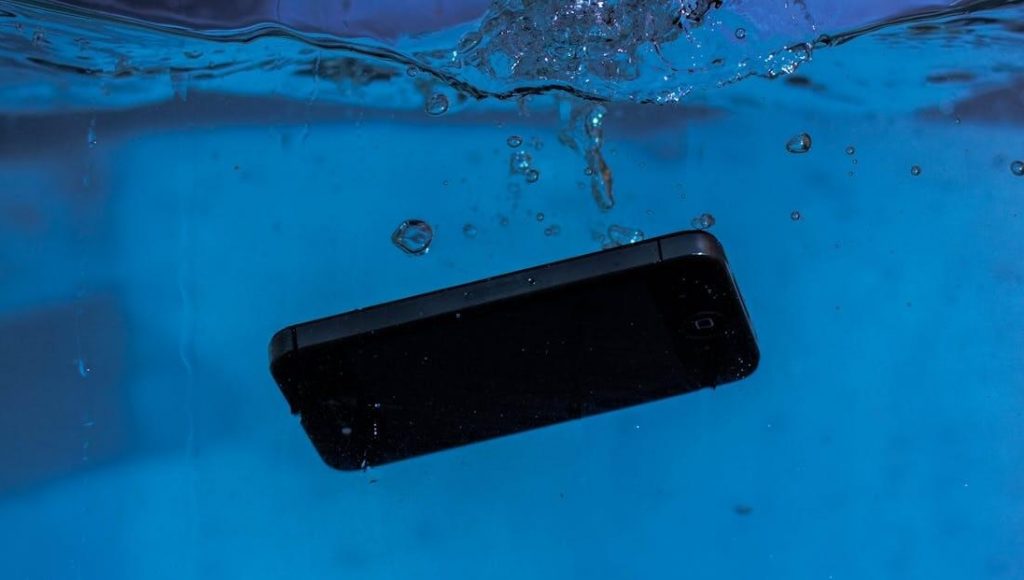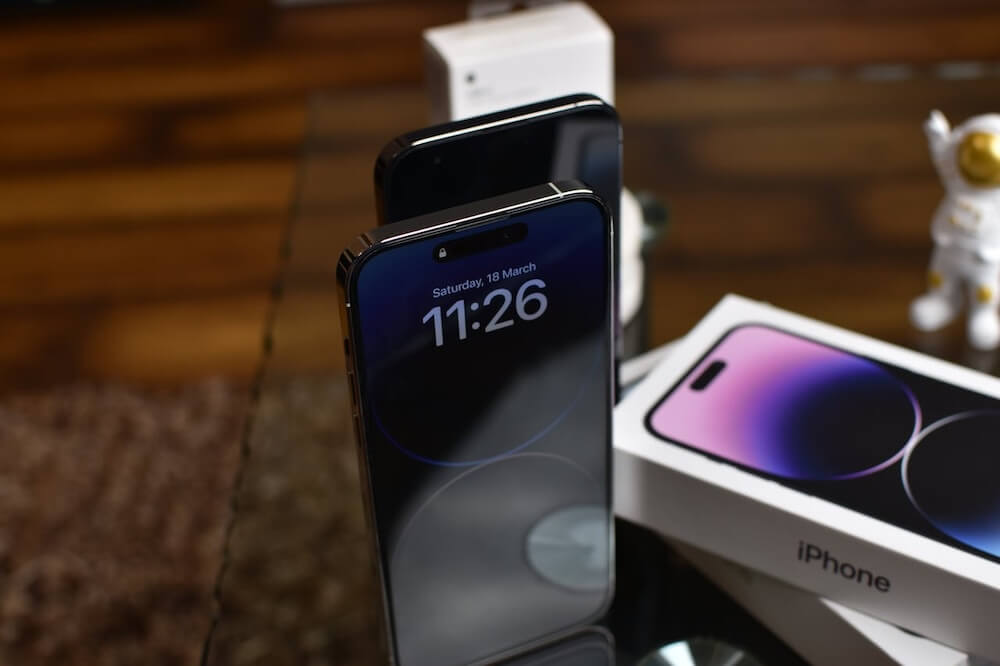Knowing how well your iPhone 14 handles water can save you stress and money. As smartphones increasingly integrate water-resistant features, it’s crucial to clarify how these advancements apply to the iPhone 14.
Waterproof vs water resistant: Is there a difference?
Many mistakenly use ‘waterproof’ and ‘water-resistant’ interchangeably, but there is a significant difference.
A water-resistant phone can handle light water contact, such as splashes or brief rain exposure. However, it’s not designed to withstand prolonged submersion. If your phone is labelled as water-resistant, accidental spills or light showers won’t cause damage, but dropping it in a bathtub or pool could be problematic.
In contrast, a waterproof phone can survive complete submersion in water for specified durations and depths. These devices are equipped to handle more extreme situations, such as swimming or heavy rain.

Understanding water resistance ratings
Water resistance ratings in electronics provide crucial information on how well devices can withstand exposure to water.
These ratings are defined under international standards, primarily the Ingress Protection (IP) code, which explains the level of effectiveness against elements like dust and water.
Common ratings include IP68 (more on this below), IP67, which allows for immersion up to 1 metre for 30 minutes, and IPX7, focusing solely on water resistance without dust protection.
IP68 rating details
The IP68 rating represents one of the top levels of water resistance offered in consumer electronics. The iPhone 14 has an IP68 rating. This means it is safeguarded against dust penetration and can be submerged in up to 6 metres of water for approximately 30 minutes without damage.
Remember, the IP68 rating does not support high-pressure water jets or saltwater exposure, and laboratory conditions might not perfectly replicate real-world occurrences.
How waterproof is the iPhone 14?
The iPhone 14 is waterproof, but only to a certain extent. As mentioned earlier, it possesses an IP68 rating. This means it can withstand being underwater for up to 6 meters for 30 minutes without sustaining damage. However, it’s important to note that extending the submersion depth or time beyond these limits can result in damage.
For example, if your iPhone 14 slips out of your pocket at the beach and lands in shallow water, swiftly retrieving it should keep it safe. Yet, if the tide carries it off into deeper waters and it stays submerged beyond the 30-minute threshold or sinks below six meters, the increased pressure and duration of exposure could lead to water damage.
Does the iPhone 14 have a water eject feature?
No, the iPhone 14 (and most iPhones, for that matter) does not have a built-in water eject feature.
How to eject water from iPhone 14?
While the iPhone 14 doesn’t have a built-in water eject feature, there is a workaround using the Shortcuts app (available on iPhones with iOS 14 or later). These apps play specific sound frequencies that help expel water from the speakers.
Here’s what to keep in mind:
- It’s a third-party shortcut, so be cautious when granting permissions.
- If your iPhone has been submerged in water, it’s always best to follow Apple’s official recommendations for drying it out and taking it to a certified service provider.
While not officially endorsed by Apple, these apps can be a practical solution in drying out your device’s speakers after exposure to moisture.
What to do if your iPhone 14 gets wet?
If your iPhone 14 encounters water, taking prompt and careful action can help minimise damage. Follow these steps:
- Immediately turn off your iPhone to prevent electrical damage.
- Disconnect any cables, headphones, or cases to avoid short circuits.
- Dry your phone thoroughly. Don’t use heat sources like hair dryers. Instead, gently pat the phone with a soft, lint-free cloth to remove excess water.
- Open ports downward. Let the phone air dry in a well-ventilated area with good airflow. Place it on a clean towel with the lightning or USB-C port facing down to encourage any remaining water to drain.
- Resist the urge to charge your iPhone. Let it dry completely for at least 4-5 hours, preferably overnight.
For more details, read: What happens when your phone gets wet?
If your iPhone shows signs of damage or you’re concerned about lingering moisture, contact Apple Support or an authorised service provider.
How to protect an iPhone 14 from water?
Proper water damage prevention is crucial for maximising the lifespan and optimal functionality of your iPhone 14. Here are some practical measures you can take:
- Using a waterproof case is one of the best investments for water protection, especially if you frequently find yourself near water bodies or in rainy conditions.
- Keep your iPhone away from water during activities like bathing, washing dishes, or swimming.
- If your iPhone has a case with sealing for water resistance, check these seals periodically to ensure they are intact and not compromised.
- Avoid leaving your iPhone in environments where it can be exposed to condensation, such as shower areas or in very humid weather.
- Keep your iPhone out of extreme conditions. Avoid having your phone with you during activities like water sports or exposure to high-pressure water streams (such as jet skiing or power washing), as these can exceed the limits of the IP68 rating.
Implementing these measures will significantly enhance your iPhone 14’s protection against water-related incidents, maximising its operational lifespan and maintaining peak functionality.
Can an iPhone be fixed if it gets wet?
Getting your iPhone 14 wet can be stressful, but there’s still hope!
While Apple’s warranty doesn’t cover water damage and attempting a DIY fix can be risky, acting fast can increase your chances of salvaging your phone.
myhalo offers expert iPhone repair services that can effectively restore your device from water-related issues. Our professionals have the expertise and tools to diagnose the damage and potentially repair your iPhone.
Should your iPhone be deemed beyond repair, all hope isn’t lost. myhalo also provides a responsible alternative through a trade-in program. This allows you to recoup some money for your damaged device and put it towards a new iPhone.
Remember, when choosing a repair service provider, prioritise businesses with qualified technicians and a strong reputation.
Conclusion
While the iPhone 14 is built to withstand typical encounters with water, it’s not entirely waterproof. Understanding the difference between water-resistant and waterproof, as well as how to properly care for and potentially salvage your device, can greatly enhance its longevity.
For those unexpected situations where repair or trade-in becomes necessary, platforms like myhalo are invaluable for their expert service and commitment to sustainability.
